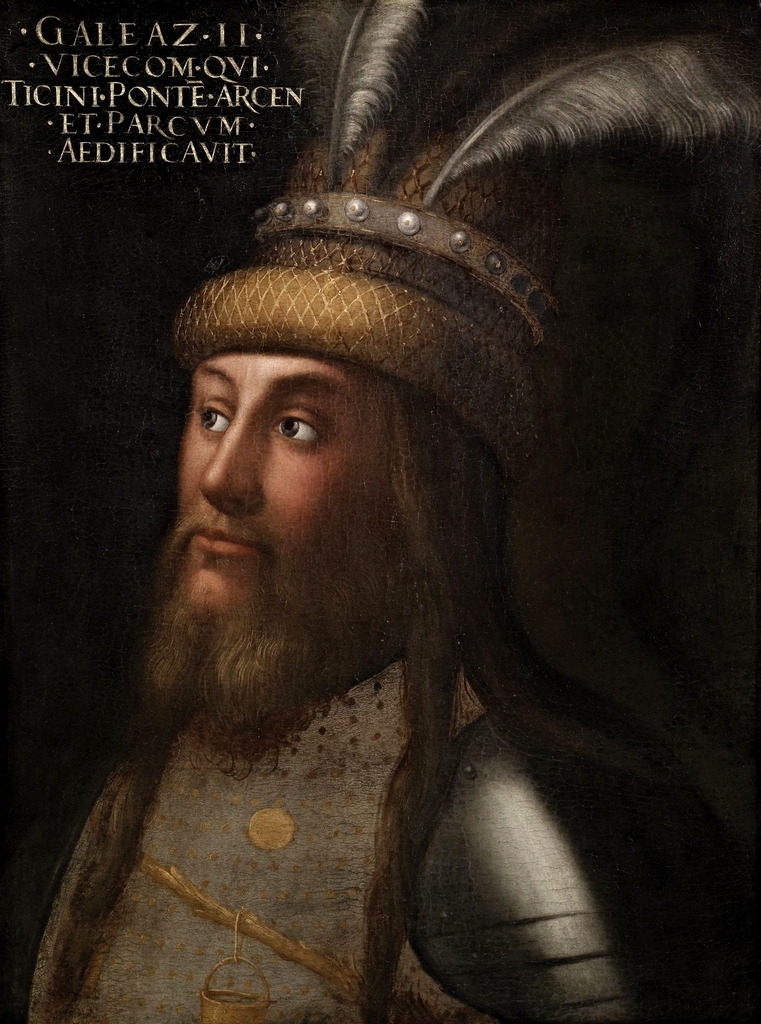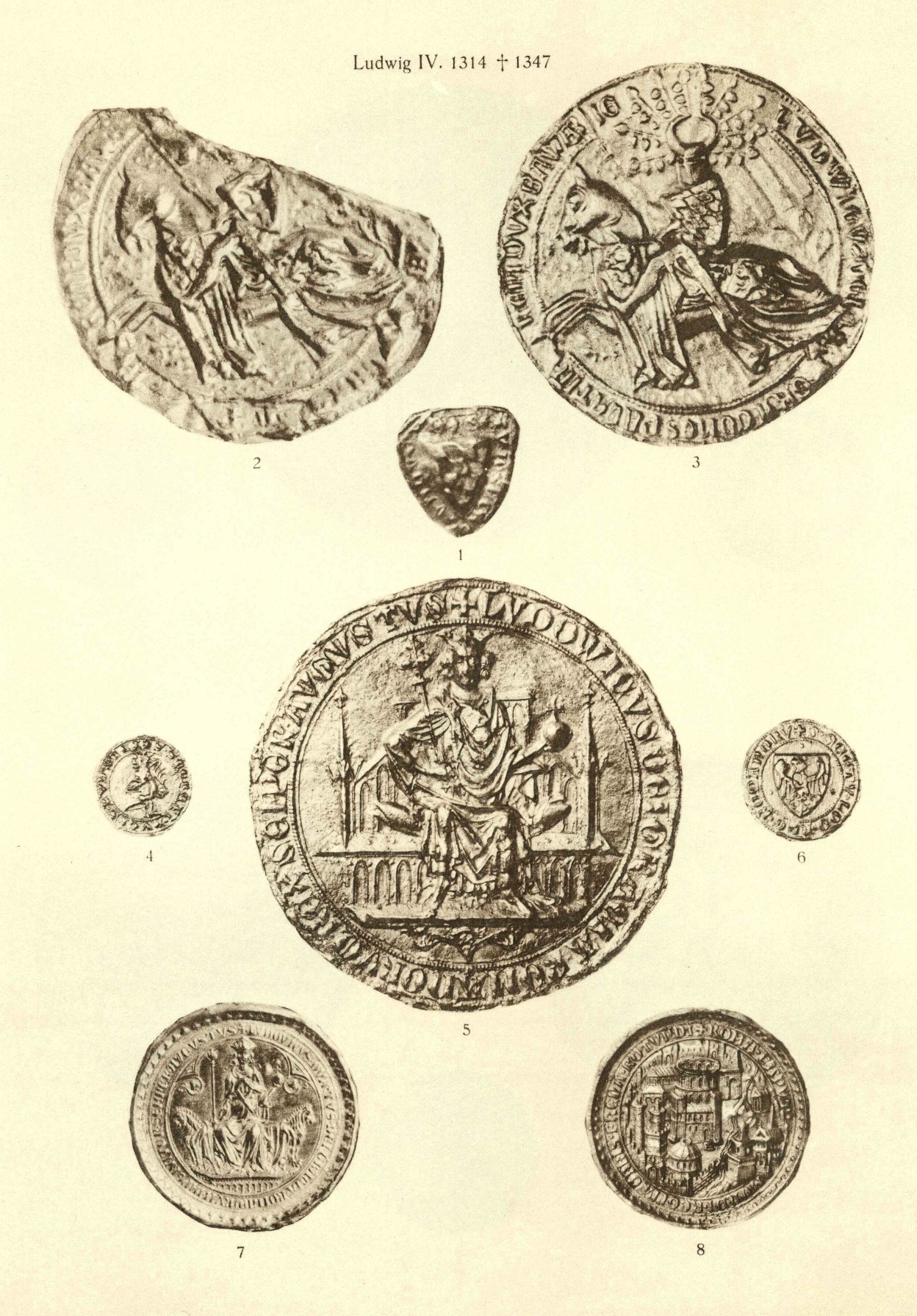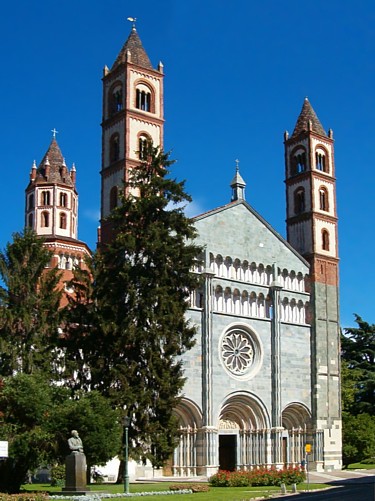|
Galeazzo II Visconti
Galeazzo II Visconti ( – 4 August 1378) was a member of the Visconti of Milan, Visconti dynasty and a ruler of Milan, Italy. His most notable military campaigns were against Pope Gregory XI, around 1367. These battles fought between the papacy and the Visconti family ultimately ended in a peace treaty. Politically active, he expanded the power of his family, where the Visconti first became hereditary rulers of Milan starting in 1349. He is remembered in conjunction with his patronage of intellectuals and writers, from his sponsorship of Petrarch to the founding of the University of Pavia in 1361. Galeazzo II Visconti, and his brother Bernabò Visconti, Bernabò, are credited with the institution of the Quaresima Torture Protocol, a vicious means of torture. Visconti family The founder of the Visconti house is a conflicted claim, though widespread credit goes to Galeazzo's ancestor, Ottone Visconti. Other notable figures in the Visconti family include Matteo I Visconti, Matt ... [...More Info...] [...Related Items...] OR: [Wikipedia] [Google] [Baidu] |
Rulers Of Milan
Rulers of Milan may refer to: *Lord of Milan (1259–1395) *List of dukes of Milan (1395–1814) {{Short pages monitor ... [...More Info...] [...Related Items...] OR: [Wikipedia] [Google] [Baidu] |
Holy Roman Emperor Charles IV
Charles IV (; ; ; 14 May 1316 – 29 November 1378''Karl IV''. In: (1960): ''Geschichte in Gestalten'' (''History in figures''), vol. 2: ''F–K''. 38, Frankfurt 1963, p. 294), also known as Charles of Luxembourg, born Wenceslaus (, ), was Holy Roman Emperor from 1355 until his death in 1378. He was elected King of Germany (King of the Romans) in 1346 and became King of Bohemia (as Charles I) that same year. He was a member of the House of Luxembourg from his father's side and the Bohemian House of Přemyslid from his mother's side; he emphasized the latter due to his lifelong affinity for the Bohemian side of his inheritance, and also because his direct ancestors in the Přemyslid line included two saints. He was the eldest son and heir of John of Bohemia, King of Bohemia and Count of Luxembourg, who died at the Battle of Crécy on 26 August 1346. His mother, Elizabeth, Queen of Bohemia, was the sister of Wenceslaus III, King of Bohemia and Poland, the last of the mal ... [...More Info...] [...Related Items...] OR: [Wikipedia] [Google] [Baidu] |
Giovanni Visconti (archbishop)
Giovanni Visconti (1290–1354) was an Italian Roman Catholic cardinal, who was co-ruler in Milan and lord of other Italian cities. He also was a military leader who fought against Florence, and used force to capture and hold other cities. Biography He was the son of Matteo I Visconti and Bonacossa Borri. Giovanni Visconti was elected archbishop by the Capitol of Milan in 1317, but Pope John XXII refused to confirm the election and instead raised Aicardus from Comodeia to that position. In 1323 John excommunicated him with an accusation of heresy, and Visconti found an ally in the antipope Nicholas V, who give him the title of cardinal. In 1331 he became bishop and lord of Novara, and in 1339, after Aicardus' death, he triumphantly entered Milan, although Pope Clement VI only issued a bull confirming him in the archbishopric in 1342. Officially, he was Archbishop of Milan from 1342 to 1354. Together with his brother Luchino, Visconti bought from the Pope the title of co-ruler ... [...More Info...] [...Related Items...] OR: [Wikipedia] [Google] [Baidu] |
Jerusalem
Jerusalem is a city in the Southern Levant, on a plateau in the Judaean Mountains between the Mediterranean Sea, Mediterranean and the Dead Sea. It is one of the List of oldest continuously inhabited cities, oldest cities in the world, and is considered Holy city, holy to the three major Abrahamic religions—Judaism, Christianity, and Islam. Both Israel and Palestine claim Jerusalem as their capital city; Israel maintains its primary governmental institutions there, while Palestine ultimately foresees it as its seat of power. Neither claim is widely Status of Jerusalem, recognized internationally. Throughout History of Jerusalem, its long history, Jerusalem has been destroyed at least twice, Siege of Jerusalem (other), besieged 23 times, captured and recaptured 44 times, and attacked 52 times. According to Eric H. Cline's tally in Jerusalem Besieged. The part of Jerusalem called the City of David (historic), City of David shows first signs of settlement in the 4th ... [...More Info...] [...Related Items...] OR: [Wikipedia] [Google] [Baidu] |
Luchino Visconti (ruler Of Milan)
Luchino Visconti (also spelled Lucchino, 1287 or 1292 – 24 January 1349) was lord of Milan from 1339 to 1349. He was also a condottiero, and lord of Pavia. Biography Ruler of Pavia from 1315, five years later he was ''podestà'' of Vigevano, where he erected the castle that is still visible. In 1323, along with all his family, he was excommunicated with the charge of heresy. The charges of heresy and excommunication were later withdrawn "Lucchino made peace with the church in 1341, bought Parma from Obizzo d'Este and made Pisa dependent on Milan. Although he showed ability as general and governor, he was jealous and cruel, and was poisoned in 1349 by his wife Isabella Fieschi." and he became a Papal Vicar in 1341. He co-ruled in Milan with his nephew Azzone Visconti and his brother Giovanni, until Azzones's death in 1339. He also took part in the victorious battle of Parabiago against his other nephew, Lodrisio, who had set a mercenary army to capture Milan. With an army of ... [...More Info...] [...Related Items...] OR: [Wikipedia] [Google] [Baidu] |
Galeazzo I Visconti
Galeazzo I Visconti (21 January 1277 – 6 August 1328) was lord of Milan from 1322 to 1327. After being chosen Captain of Milan, he defeated two papal armies and was excommunicated by Pope John XXII. Temporarily imprisoned for murder, Galeazzo retired to Pescia and died in August 1328. Biography Galeazzo was the son of Matteo I Visconti and Bonacosa Borri. On 24 June 1300 he married Beatrice d'Este, daughter of Obizzo II d'Este. The following year the Visconti were however forced to leave Milan and he lived at the Este and Bonacolsi courts for several years. In 1322 Galeazzo was named ''capitano del popolo'' in Milan, and defeated a Papal- Angevin army at Bassignana. He was excommunicated by Pope John XXII in March 1323 and unrest in Milan impaired his authority. With the support of Emperor Louis IV, at Monza Galeazzo defeated an army sent against him by John XXII. In 1328, after accusations of betrayal from his brother Marco, as well as that of the assassination of his broth ... [...More Info...] [...Related Items...] OR: [Wikipedia] [Google] [Baidu] |
Holy Roman Emperor Louis IV
Louis IV (; 1 April 1282 – 11 October 1347), called the Bavarian (, ), was King of the Romans from 1314, King of Italy from 1327, and Holy Roman Emperor from 1328 until his death in 1347. Louis' election as king of Germany in 1314 was controversial, as his Habsburg cousin Frederick the Fair was simultaneously elected king by a separate set of electors. Louis defeated Frederick in the Battle of Mühldorf in 1322, and the two eventually reconciled. Louis was opposed and excommunicated by the French Pope John XXII; Louis in turn attempted to depose the pope and install an anti-pope. Louis IV was Duke of Upper Bavaria from 1294 to 1301 together with his elder brother Rudolf I, was Margrave of Brandenburg until 1323, and Count Palatine of the Rhine until 1329, and became Duke of Lower Bavaria in 1340. He was the last Bavarian to be a king of Germany until 1742. He became Count of Hainaut, Holland, Zeeland, and Friesland in 1345 when his wife Margaret inherited those domains. ... [...More Info...] [...Related Items...] OR: [Wikipedia] [Google] [Baidu] |
Como
Como (, ; , or ; ) is a city and (municipality) in Lombardy, Italy. It is the administrative capital of the Province of Como. Nestled at the southwestern branch of the picturesque Lake Como, the city is a renowned tourist destination, celebrated for its stunning landscapes, artistic heritage, and cultural significance. Its prime location on the shores of Lake Como and its proximity to the majestic Alps has made Como a popular destination for tourists. The city boasts a rich collection of art, religious sites, verdant gardens, museums, theatres, public parks, and opulent palaces, including the iconic ''Duomo'', seat of the Diocese of Como; the Basilica of Sant'Abbondio; Villa Olmo; the public gardens with the Tempio Voltiano; the Teatro Sociale; the ''Broletto'', the city's medieval town hall; and the 20th-century Casa del Fascio, a landmark of modernist architecture. Como has been the birthplace of numerous notable historical figures, including the Roman poet Caecili ... [...More Info...] [...Related Items...] OR: [Wikipedia] [Google] [Baidu] |
Novara
Novara (; Novarese Lombard, Novarese: ) is the capital city of the province of Novara in the Piedmont (Italy), Piedmont region in northwest Italy, to the west of Milan. With 101,916 inhabitants (on 1 January 2021), it is the second most populous city in Piedmont after Turin. It is an important crossroads for commercial traffic along the routes from Milan to Turin and from Genoa to Switzerland. Novara lies between the streams Agogna and Terdoppio in northeastern Piedmont, from Milan and from Turin. It is only distant from the river Ticino, which marks the border with Lombardy region. History Novara was founded around 89 BC by the Ancient Rome, Romans, when the local Gauls obtained Roman citizenship. Its name is formed from ''Nov'', meaning "new", and ''Aria'', the name the Cisalpine Gauls used for the surrounding region. Ancient ''Novaria'', which dates to the time of the Ligures and the Celts, was a municipium and was situated on the road from Vercellae (Vercelli) to (Mediol ... [...More Info...] [...Related Items...] OR: [Wikipedia] [Google] [Baidu] |
Vercelli
Vercelli (; ) is a city and ''comune'' of 46,552 inhabitants (January 1, 2017) in the Province of Vercelli, Piedmont, northern Italy. One of the oldest urban sites in northern Italy, it was founded, according to most historians, around 600 BC. The city is situated on the Sesia River in the Pianura padana, plain of the Po River between Milan and Turin. It is an important centre for the cultivation of rice and is surrounded by rice paddies, which are flooded in the summer. The climate is typical of the Po Valley with cold, foggy winters ( in January) and oppressive heat during the summer months ( in July). Rainfall is most prevalent during the spring and autumn; thunderstorms are common in the summer. The languages spoken in Vercelli are Italian language, Italian and Piedmontese language, Piedmontese; the variety of Piedmontese native to the city is called ''Varsleis''. The world's first university funded by public money was established in Vercelli in 1228 (the seventh universit ... [...More Info...] [...Related Items...] OR: [Wikipedia] [Google] [Baidu] |
Azzone Visconti
Azzone Visconti (7 December 1302 – 16 August 1339) was lord of Milan from 1329 until his death. After the death of his uncle, Marco Visconti, he was threatened with excommunication and had to submit to Pope John XXII. Azzone reconstituted his family's land holdings, taking numerous cities. He died in 1339. Biography Born in Ferrara, he was the sole legitimate son of Galeazzo I Visconti and Beatrice d'Este. In 1322 he was lord of Piacenza, but in the same year, together with his father, was forced to flee. In 1325, Azzone commanded troops at the battles of Altopascio and Zappolino, both victories over the Guelphs. In 1327, his father Galeazzo and all of the other leading members of the Visconti family were arrested under suspicion of assassinating Galeazzo's younger brother Stefano. Their territories were confiscated by the Emperor, and local families took control of many cities that had long been tied to the Viscontis. Milan itself was ruled by a new Imperial appointee and ... [...More Info...] [...Related Items...] OR: [Wikipedia] [Google] [Baidu] |
Sardinia
Sardinia ( ; ; ) is the Mediterranean islands#By area, second-largest island in the Mediterranean Sea, after Sicily, and one of the Regions of Italy, twenty regions of Italy. It is located west of the Italian Peninsula, north of Tunisia and 16.45 km south of the French island of Corsica. It has over 1.5 million inhabitants as of 2025. It is one of the five Italian regions with some degree of Autonomous administrative division, domestic autonomy being granted by a Regions of Italy#Autonomous regions with special statute, special statute. Its official name, Autonomous Region of Sardinia, is bilingual in Italian language, Italian and Sardinian language, Sardinian: / . It is divided into four provinces of Italy, provinces and a Metropolitan cities of Italy, metropolitan city. Its capital (and largest city) is Cagliari. Sardinia's indigenous language and Algherese dialect, Algherese Catalan language, Catalan are referred to by both the regional and national law as two of ... [...More Info...] [...Related Items...] OR: [Wikipedia] [Google] [Baidu] |





